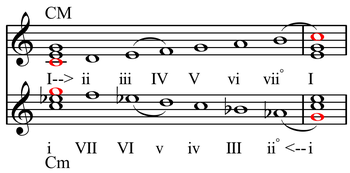
Riemannian theory, in general, refers to the musical theories of German theorist Hugo Riemann (1849–1919). His theoretical writings cover many topics, including musical logic,[1] notation,[2] harmony,[3] melody,[4] phraseology,[5] the history of music theory,[6] etc. More particularly, the term Riemannian theory often refers to his theory of harmony, characterized mainly by its dualism and by a concept of harmonic functions.
- ^ Musikalische Logik. Hauptzüge der physiologischen und psychologischen Begründung unseres Musik-systems, Leipzig, 1873.
- ^ Studien zur Geschichte der Notenschrift, Leipzig, 1878; Die Entwickelung unserer Notenschrift, Leipzig, 1881; Notenschrift und Notendruck, Leipzig, 1896.
- ^ Skizze einer neuen Methode der Harmonielehre, Leipzig, 1880; Handbuch der Harmonielehre, Leipzig, 1887; Vereinfachte Harmonielehre, London/New York, 1893.
- ^ Neue Schule der Melodik, Hamburg, 1883.
- ^ Katechismus der Phrasierung, Leipzig, 1890, 2d edition Vademecum der Phrasierung, 1900, 8th edition as Handbuch der Phrasierung.
- ^ Geschichte der Musiktheorie im IX.–XIX. Jahrhundert, Berlin, 1898.